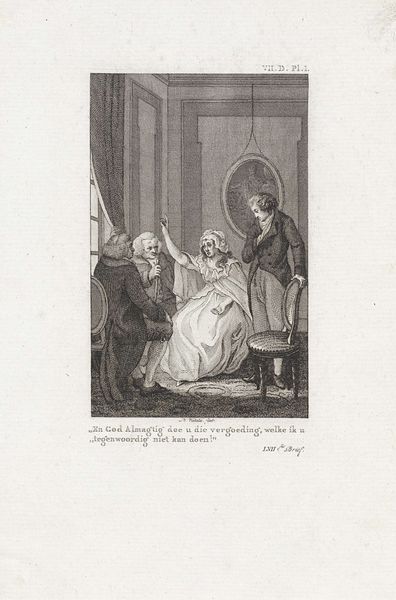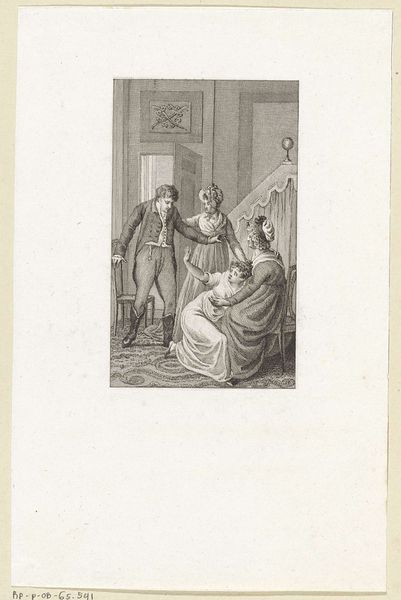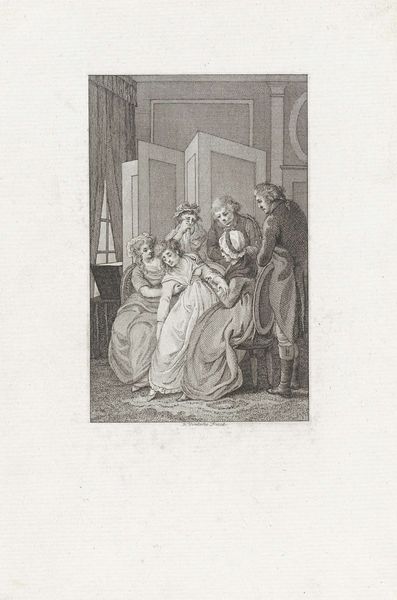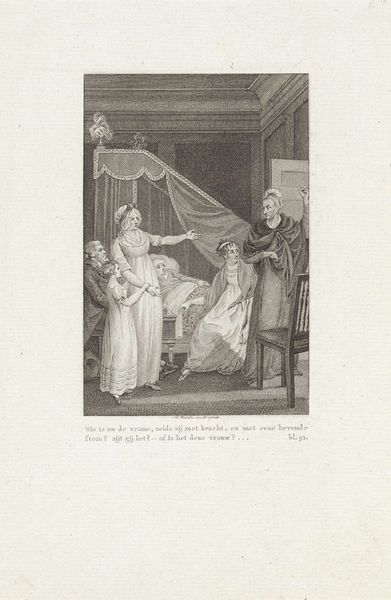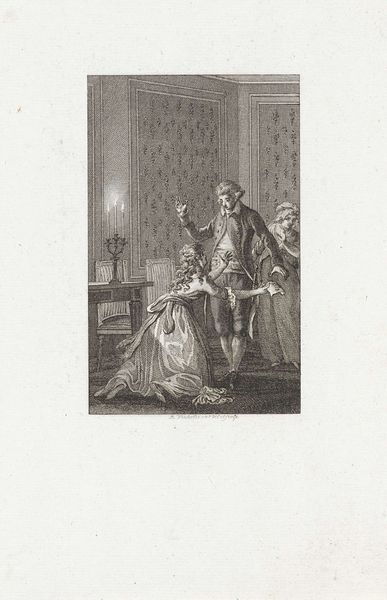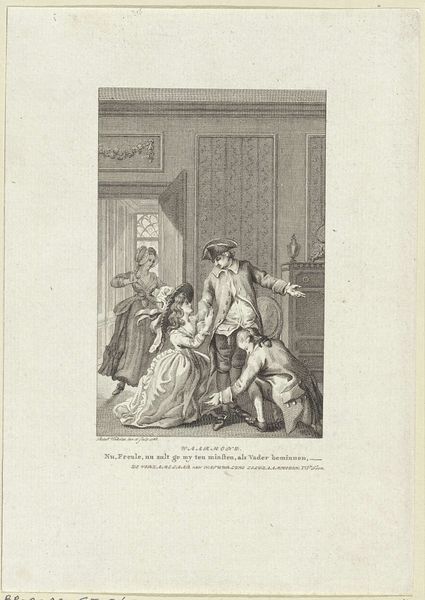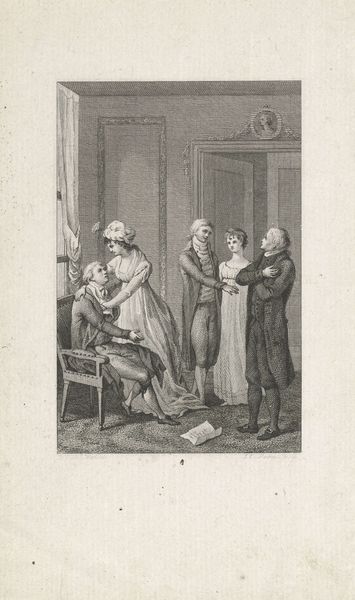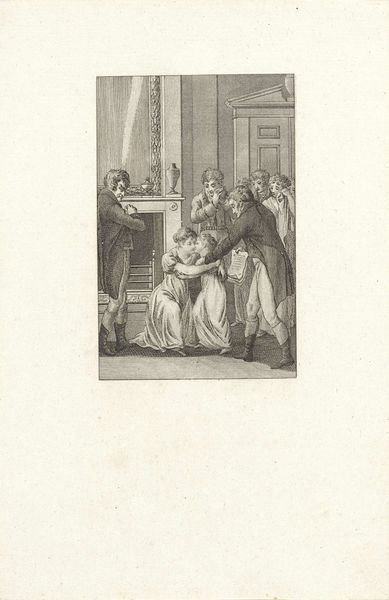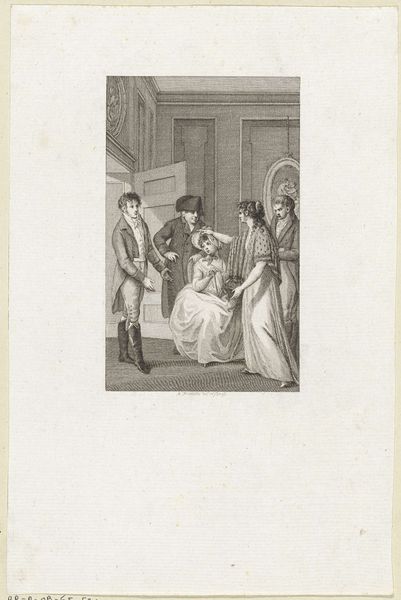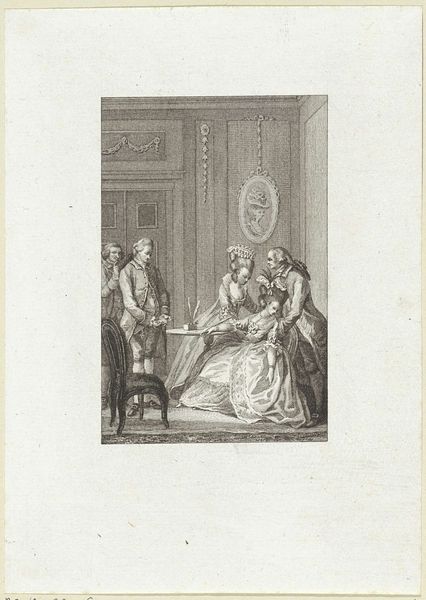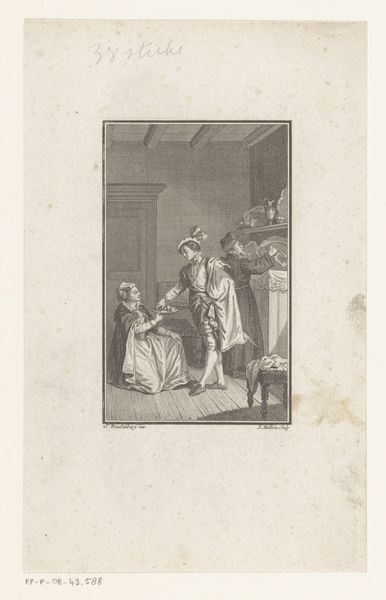
Dimensions: height 210 mm, width 148 mm
Copyright: Rijks Museum: Open Domain
Editor: So, this print, “Julie asks her husband desperately to take her with him,” made in 1780 by Reinier Vinkeles, gives me such a feeling of claustrophobia, even though it depicts a spacious room. It's something about the confined expressions, maybe. What jumps out at you when you look at this engraving? Curator: What immediately strikes me is how this seemingly simple image actually engages with broader social currents of its time. This scene, with its histrionic emotion, participates in the culture of sensibility so popular in the late 18th century. Think about the period’s fascination with novels exploring the nuances of feeling, and consider how engravings like these disseminated those melodramatic narratives to a wider public. Have you thought about how this print operates within the context of visual culture and the literary market? Editor: That makes sense! So, the print isn’t just depicting a scene, it’s participating in a trend, almost like visual fan fiction? Did the intended audience think about art differently than we do now? Curator: Absolutely. This wasn’t merely an illustration; it was part of a visual ecosystem influencing, and influenced by, the prevailing attitudes. Consider the burgeoning print market and the accessibility of engravings; how does the artwork change when a middle class audience has access to images, when it's not only something the aristocracy views? Editor: Wow, I never thought of it that way. So by looking at what was happening culturally at that time, we get to have a better grasp on why a work like this had a purpose for its original audience. Thanks! Curator: Precisely. Examining art through this lens allows us to move beyond individual interpretation and understand its function within the complex fabric of society.
Comments
No comments
Be the first to comment and join the conversation on the ultimate creative platform.
